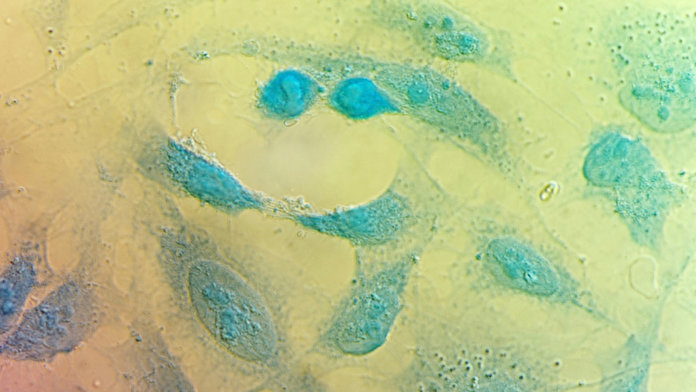Technology’s role in modern healthcare is growing. Artificial intelligence is being used for mental health, and smartphones can use add-ons to do things we never would have imagined ten years ago, like diagnose STDs and image our eyes.
Now, mobile health is venturing into new and similarly amazing territory: a smartphone app that uses artificial intelligence and an add-on device to diagnose cervical cancer.
World Health Organization statistics show that 87 percent of cervical cancer deaths occur in developing nations, and there’s a shocking differential in mortality rates between the developed and developing world—of 100,000 women diagnosed with cervical cancer, the disease will kill only two in Western Europe or Australia, but more than 27 in Eastern Africa. This differential is mostly due to the unequal access women in various parts of the world have to high-quality healthcare.
Philanthropic innovation company Global Good is out to change that. They want to use mobile technology to bring quality care and diagnostics to parts of the world that lack doctors and medical infrastructure.
From old to new
Traditional cervical cancer screening works like this: a gynecologist does a Pap smear to get a sample of cervical cells. The sample is sent to an offsite lab to be analyzed, where it joins the queue of thousands of other samples waiting to be analyzed. Results are sent back to the patient’s clinic, and if there’s a problem, the patient must schedule a follow-up visit for further analysis or treatment. During the follow-up visit, the doctor does a colposcopy, which involves examining the cervix with a microscope and taking a biopsy of the abnormal tissue.
That’s a lot of hassle and expense, even for women who have access to all of the above-mentioned resources. What about women in areas where mail service is irregular, or where gynecologists are few and far between?
With Global Good’s diagnostic tool, health workers will use an attachment called an enhanced visual assessment (EVA) scope. It clips onto a smartphone and turns the phone into a sort of colposcope, using an app to take a picture of a woman’s cervix then analyze and store that picture. Women who are determined to have cancerous or pre-cancerous symptoms can then be treated on site.
Whereas prior mobile health solutions might still rely on a person to review the information gathered by the device, Global Good aims to pair their hardware with cutting-edge software. Using the latest in deep learning, they’re building a program that will teach itself to recognize and diagnose the disease.
How it works
The app’s creators partnered with the US National Cancer Institute to get access to 100,000 high-quality, annotated, anonymized cervical images. The images get tagged as belonging to categories like healthy tissue, benign inflammation, precancerous lesions, or suspected cancer.
They’re then fed into a deep learning system, where the software learns to differentiate between categories, progressively improving its ability to recognize symptoms and make accurate diagnoses.
Researchers are training the software with the Cancer Institute’s images before integrating images taken with the EVA scope, which will be more complex due to variations in focus, lighting, and alignment. They’ll then monitor the app’s progress by comparing the diagnoses it makes to diagnoses made by medical experts and lab tests (the traditional way).
Global Good plans to begin field trials of the EVA scope and its accompanying app in Ethiopia this year.
A better (healthcare) future
Their work is part of a growing effort to pair a widely-available technology—smartphones—with artificial intelligence to make previously expensive, complex healthcare processes simpler, cheaper, and accessible to anyone. Just last month, the XPRIZE Foundation awarded $2.5 million for a smartphone add-on kit that diagnoses twelve different illnesses and measures vital signs.
In an ideal future, two big things (among others) will change in healthcare: it will shift from being reactive to being proactive and the gap in quality of care for rich and poor will significantly narrow. Personal health monitoring and point-of-care diagnostics can help with both of those goals.
Technologies like the EVA scope will continue to be applied and adapted to more and more health conditions, and they’ll become cheaper and better in the process. Our ideal healthcare future isn’t here yet, but we’re clearly taking steps in that direction.
Image Credit: Pond5



